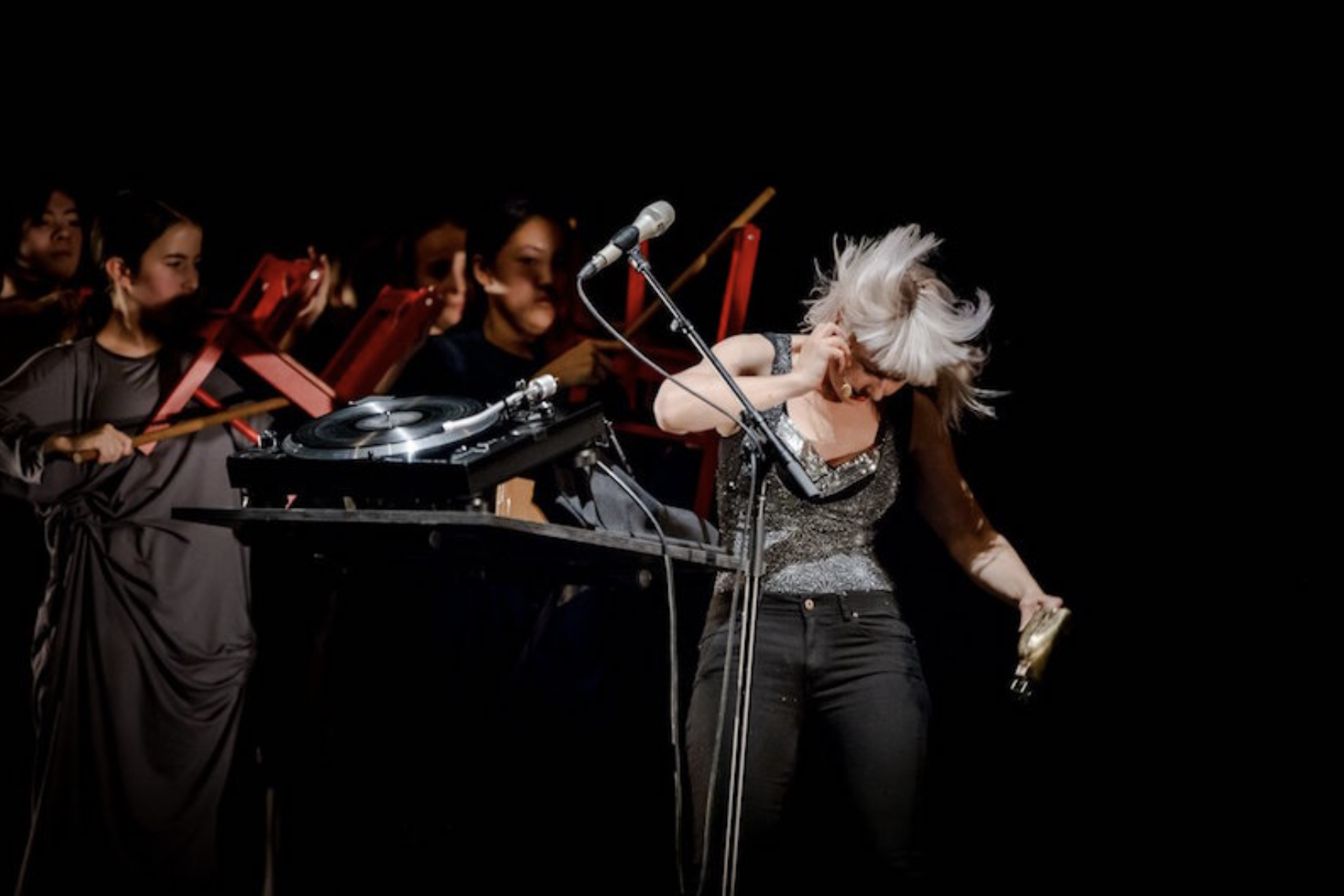After watching this captivating and highly mediative performance, it’s easy to see why Atlas of the Sky was awarded Performance of the Year in 2019 by the APRA AMCOS Australian Art Music Awards. This is a work that presents a rich, dramatic tableau prompting the audience to think deeply about the universe and cosmos, our place within it, and the ritualistic and primal nature that lies somewhere deep within all of us.
It was composed by the award-winning Liza Lim, who was recently appointed as the Sydney Conservatorium of Music’s inaugural Sculthorpe Chair of Australian Music, and who is one of Australia’s most revered contemporary classical composers. Her practice has a keen focus on the exploration of human relationships, and ancient and spiritual traditions, and within this work we see that come to life, with exceptional nuance.
 Atlas of the Sky performed by Speak Percussion at Melbourne Recital Centre in 2018. Photograph © Bryony Jackson
Atlas of the Sky performed by Speak Percussion at Melbourne Recital Centre in 2018. Photograph © Bryony Jackson
Atlas of the Sky was commissioned and performed by boundary-breaking Speak Percussion, which is known for fostering deeply collaborative working relationships on their projects, and a mission to push through preconceived notions as to what percussion is. Speak Percussion is joined by soprano Jessica Aszodi and the ‘crowd’ comprising of 16 trained and untrained performers who participated in the creation of the work.
The central inspiration for Atlas of the Sky was three wondrous pieces of poetry – The Stars excerpted from An Elemental Thing by Eliot Weinberger a lush piece that explores the shifting meanings of the stars and the cosmos between cultures through time, along with Whetting and The Answer by contemporary Chinese poet Bei Dao, which link the notions of the crowd mob mentality and the power and symbolism of the constellations.
Across the performance a wide range of soundscapes are created, layer upon layer, adding to the complexity of the work, performed by Speak Percussion’s Musical Director and percussionist Eugene Ughetti, and percussionists Kaylie Melville and Matthias Schack-Arnott. Opening with a stark and isolating tableau, the performers arrive on the floor slowly, one at the time, creating and adding compositionally to the layers of sound as they join the performance. The semantron – a large wooden percussion instrument used in monasteries to summon the monks to prayer or at the start of a procession – features centrally to the staging. This is just one of the many instruments that are masterfully performed through the piece ranging from purpose-built instruments, including string drums, stones, spinning tops and Ikea chairs, to a range of world music instruments such as the reco-reco, cowbells, almglocken, den den drums and piccolo woodblocks. The three percussionists are captivating to watch in their own right. Ughetti plays with an assurance and subtle theatrics which could be easy to miss with so much going on across the stage, Melville is more restrained to watch, though with close attention you can see the skill with which she is able to extract sound and pitch with the tiniest of movements.
Throughout this one-hour work we get to experience Aszodi’s full vocal range, as she is the main conduit for expressing and delivering the three poetic excerpts by Weinberger and Dao. Aszodi’s performance is captivating, ranging from operatic to primal guttural throat singing, including spoken word at many times throughout the performance. Aszodi appears to be transported, as if performing from a trance-like state. Despite the minimalist design aesthetic, the performance is at times highly theatrical; at one point a percussive duel between Ughetti and Schack-Arnott plays out behind Aszodi. All three percussionists, and Aszodi, are central to the underlying narrative, complementing each other as they weave their way through and interact with the ‘crowd’. The ‘crowd’ play makeshift instruments using Ikea chairs as drums and violins, clearly adding to the vibrational energy in the work, and also visually through choreographed patterns, which illustrate some of the more subtle elements at play, hinting at group think, power and control and the importance of ritual. Symbolism and metaphor abound in this complex and ambitious work.











Comments
Log in to join the conversation.